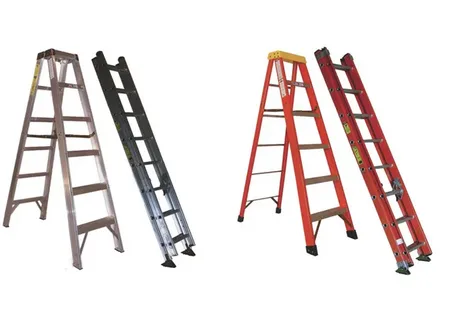In the construction industry, ladders are indispensable tools used for a wide range of tasks, from framing walls to installing roofing and handling repairs at height. Choosing the right type of ladder is crucial, as it affects both safety and efficiency on the job site. Among the most commonly used options are aluminum construction ladders, valued for their light weight and weather resistance. However, when comparing them to fiberglass ladders, it’s important to consider how each material performs in terms of durability and suitability for different work environments.
Aluminum Ladders: Lightweight and Weather-Resistant
Aluminum ladders are widely favored in the construction industry for their lightweight nature. This makes them easy to carry, set up, and reposition, particularly on large job sites or where access is limited. Aluminum also boasts excellent resistance to rust and corrosion, making it a good option for outdoor work, especially in damp or coastal environments.
Durability-wise, aluminum ladders can withstand frequent use and harsh weather conditions. However, they are more susceptible to bending or denting under heavy loads or impact. While most professional-grade aluminum ladders are rated for high weight capacities (typically up to 300 pounds), repeated overloading or rough handling can reduce their structural integrity over time.
Fiberglass Ladders: Robust and Electrically Safe
Fiberglass ladders are known for their strength and rigidity. Unlike aluminum, fiberglass doesn’t conduct electricity, making it the preferred choice for electricians and any trade working near power lines or electrical systems. This non-conductive property enhances on-site safety, particularly in commercial and industrial settings.
In terms of durability, fiberglass ladders tend to be more resistant to physical damage such as warping, cracking, or structural fatigue. They maintain their shape and performance even after years of heavy-duty use. However, fiberglass can become brittle or discolored when exposed to prolonged UV radiation, and it’s generally heavier than aluminum, which can make transport and maneuvering more difficult.
Choosing the Right Material for the Job
The decision between aluminum and fiberglass ladders ultimately depends on the work environment and the specific tasks involved. For general construction, aluminum ladders offer a practical balance of durability, ease of use, and affordability. They are ideal for tasks like painting, framing, or general maintenance where electrical contact isn’t a concern.
For jobs that involve electrical hazards or demand maximum stability, fiberglass ladders are the safer and more robust option. Their additional weight is often a worthwhile trade-off for enhanced safety and durability.
Cost Considerations and Maintenance
Aluminum ladders are typically less expensive than their fiberglass counterparts, making them more accessible for smaller contractors or temporary job sites. However, their lower resistance to heavy wear means they may require replacement sooner in high-impact environments.
Fiberglass ladders carry a higher upfront cost but often justify the investment through a longer lifespan and reduced safety risks. Regular inspection and proper storage—such as keeping fiberglass ladders out of direct sunlight—can extend their usable life even further.
Conclusion
Both aluminum and fiberglass ladders bring unique strengths to construction work. Understanding their comparative durability helps contractors choose the right tool for the job, balancing performance, safety, and long-term cost. A thoughtful selection leads to fewer on-site accidents, higher productivity, and better return on investment.










